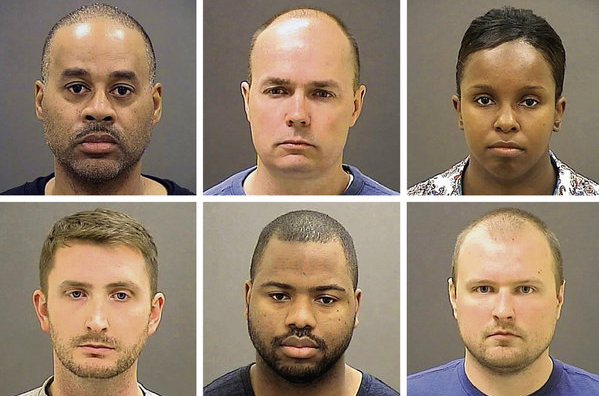This story first appeared in our 2016 Sports, Culture and Women in Hip Hop Issue, on newsstands now featuring our Yo Gotti and Hip Hop & Hollywood covers.
Almost a year since the police-related death of 25-year-old Freddie Gray, authorities in Baltimore City are gearing up for more trials and potential tribulations.
The word “riot” hasn’t been used in Baltimore since 1968 following the assassination of Dr. Martin Luther King Jr, but after the death of 25-year-old Freddie Gray while in police custody, Baltimore became a focal point of police misconduct and civil unrest around the country.
On April 12, 2015, Freddie Carlos Gray Jr. was arrested after four officers pursued him and another man on bicycles. According to published reports, Gray and others were chased by the officers then Gray stopped voluntarily, was promptly arrested while screaming in pain and placed in a police van for transport. Baltimore Police Commissioner Kevin Davis said the transport van made a previous, unknown and unauthorized stop before reaching the Western District police station, which was discovered on the footage of a private surveillance camera. The Baltimore Fire Department then received a call about an unconscious Black male who was in critical condition. Gray wasn’t taken to the University of Maryland Medical Center until almost eight hours after paramedics were requested. On April 19, 2015, Gray died from spinal injuries said to be a result of his detainment and transport.
Gray suffered from a severed vertebra exactly a week later from his initial arrest. Protests erupted around the city mirroring the 1968 Riots that followed the assassination of Dr. King. Even a Baltimore Orioles baseball game was interrupted because of the violent outbursts from the community, including setting police cars on fire. It was the first time in the history of professional baseball fans were locked out of a game. During this tense period, the mayor, who happens to be African-American, was roundly criticized for her lack of availability and leadership. The city of Baltimore was unquestionably in a state of chaos and disorder. On May 21, 2015, Marilyn Mosby, the State’s Attorney for Baltimore, Maryland, (another African-American woman) courageously announced criminal indictments against the six Baltimore police officers, to much applause from the community.
The six officers were charged with various charges relating to Gray’s death, in which the first officer, William Porter, received a hung jury in his case. Judge Barry Williams denied prosecutor’s requests to allow Officer William Porter to testify against three of his fellow officers, disrupting the case for city prosecutors. Defense attorneys for Officer Edward Nero currently want the charges of second-degree assault against Nero dismissed, because they allege the prosecutors failed to show Nero’s actions warranted the criminal charges brought against him in Gray’s death. Nonetheless, Nero’s case is scheduled to go to trial February 22 for charges of second degree assault, reckless endangerment and misconduct in office, which are all misdemeanors and offenses in which the officer will likely not face jail time. At the end of the trials, the results may not cause the community to feel justice was served. It will be very interesting and instructive how this tragic episode will unfold.
—ShaBe Allah (@KingPenStatus)


